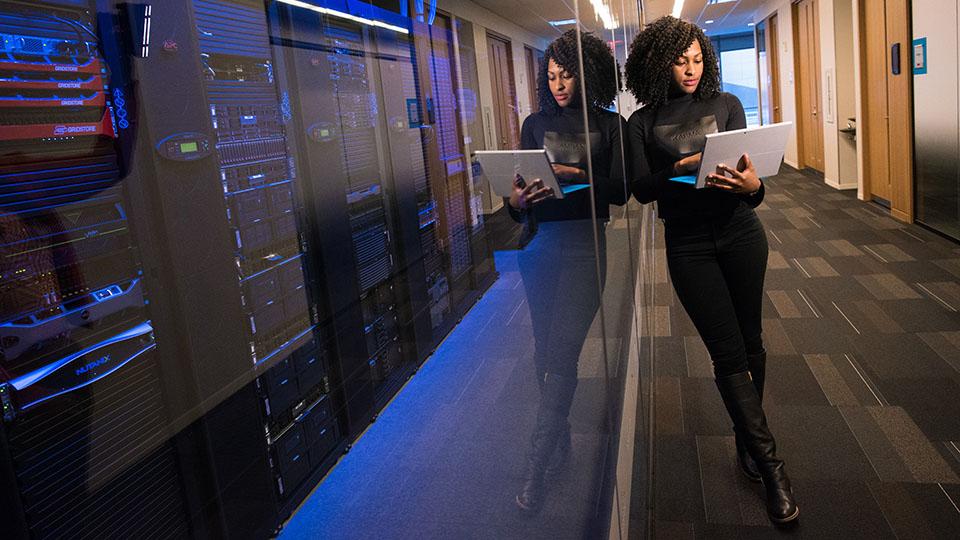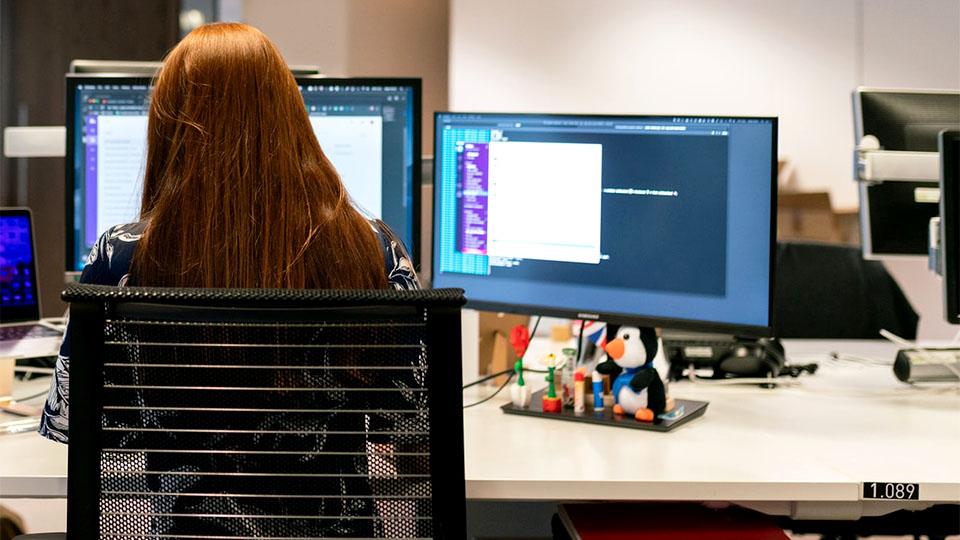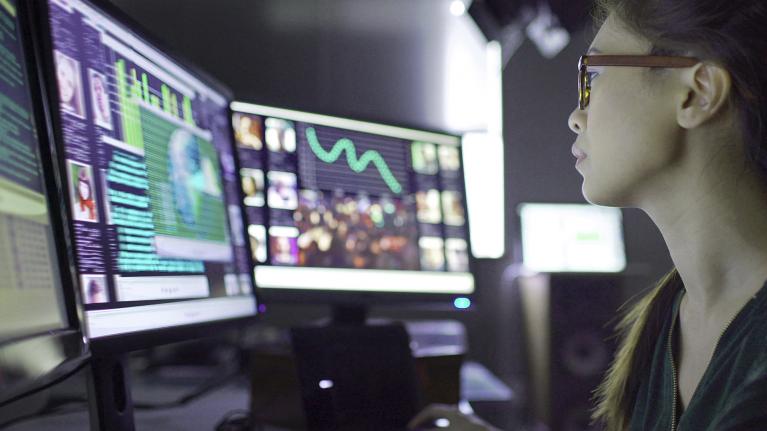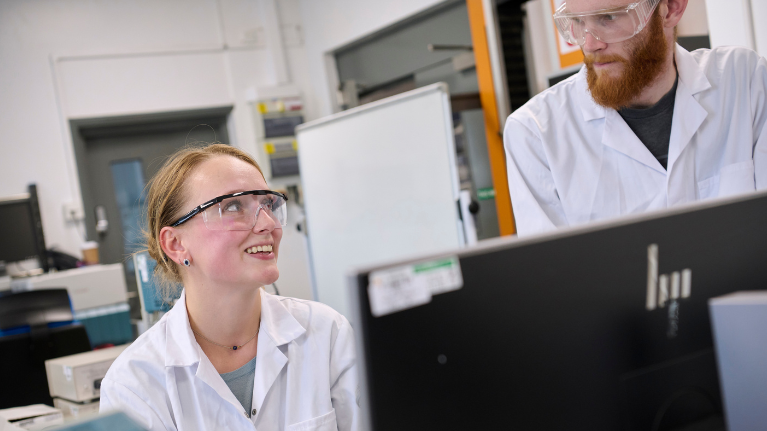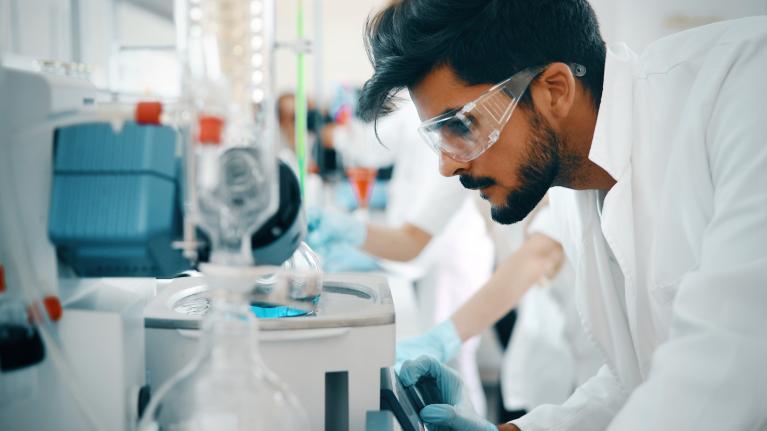
NeuroAI
summary
We develop methods and computational tools for modelling, simulating and ultimately understanding various complex systems and tasks such as learning and intelligence, and their applications to system design and artificial intelligence.
This includes a better understanding of the fundamental principles of information coding and processing of the biological systems at different scales, and applications of these insights to bio-inspired systems (such as robots) and machine learning. The developed algorithms are also applied to various medical diagnostics and treatments.
This is a new group at SCE of UWL, in the process of establishing. The group’s origin is at Imperial College London, and we continue a close collaboration with Imperial as well as with several other universities.
members
Faculty members
- Professor Konstantin Nikolic, Professor in Computing (AI, Machine Learning, Data)
- Dr Thomas Madsen, Senior Lecturer in Mathematics and Statistics
- Dr Nadia Djaid, Lecturer in Electrical and Electronic Engineering
- Dr Eugenio Donati, Lecturer in Audio Engineering
Research students
- Nicola Russo (PhD student)
- Mariya Ivanova (PhD student)
- Antoine Dedieu (PhD student)
- Diana Rune (PhD student)
- Javier Lombana (PhD student)
Current research themes
- Machine Learning: Data-driven algorithms, Information Theory
- AI: Spiking Neural Networks, Neuromorphic systems
- Neurotechnology: intelligent closed-loop neuro-stimulation devices
- Computational Neuroscience
Publications
Projects
-
MAARS Project
MAARS – Multimodal Active Adaptive Risk Stratification for Gastrointestinal Cancer. Awarded by Cancer Research UK.
- Start: 1 October 2022
- Duration: 24 months
Collaboration: University of Oxford, Manchester University NHS Foundation Trust, Queen Mary, University of Surrey, and UWL.
-
Information theory-based data-driven ML algorithms
New data-driven algorithms for feature extraction by non-parametric mutual information maximisation, which operate in very high dimensional spaces (of the order of hundreds of thousands, eg, images).
We have developed an ML algorithm based on Quadratic Mutual Information (QMI), which was first implemented on retina information processing. Optical signal that enters the eye undergoes a comprehensive processing in the retinal neural circuitry to extract relevant visual information which is passed on to other parts of the visual pathway in the brain. We have developed a predictive algorithm for the retina response to various visual inputs based on QMI technique. We have also developed applications for retinal prostheses and sensory substitution systems neural circuitry for identifying relevant receptive field vectors – input patterns that the circuit is most sensitive to.
Non-invasive diagnostics: Data Management and Machine Learning Algorithms.
Expansion of the application of the QMI algorithm to diagnostic applications and other complex systems, eg, genetic mapping of various health conditions and living organisms developmental factors. The starting point is our receptive filed QMI algorithm, which has been adapted for oesophago-gastric cancer diagnosis on the basis of exhaled breath analysis. The research is in collaboration with Prof Hanna and Dr Markar from Department of Surgery and Cancer, Medicine, Imperial College London, who are one of the world leaders in breathomics. A solution that we propose is an ML algorithm that identifies patterns of change in biomarkers. Here we also look at improving existing and developing new statistical methods for analysing clinical data.
- Katz, M.L., Viney, T.J. & Nikolic, K. (2016) “Receptive Field Vectors of Genetically-Identified Retinal Ganglion Cells Reveal Cell-Type-Dependent Visual Functions”. PLoS ONE, vol. 11, pp. e0147738 (29 pages+SI)
- Markar, S., Wiggins, T., Antonowicz, S., Chin, S., Romano, A., Nikolic, K., Evans, B., Cunningham, D., Muchal, M., Lagergren, J. & Hanna, G (2018) “Assessment of a Noninvasive Exhaled Breath Test for the Diagnosis of Oesophagogastric Cancer”. JAMA Oncology, doi:10.1001/jamaoncol.2018.0991 (7p+31pages Supplementary Material)
- Nikolic, K. & Evans, B.D. (2016) “Identifying Optimal Feature Transforms for Classification and Prediction in Biological Systems: Recovering Receptive Field Vectors from Sparse Recordings”, 33rd Intl Conf Mach Learn (ICML), Workshop Comp Biol, 5 pages
- Mu, P., Nikolic, K., and Schultz, S. (2021) “Quadratic Mutual Information estimation of mouse dLGN receptive fields reveals asymmetry between ON and OFF visual pathways”, IEEE EMBS Conf on Neural Engineering – NER21 (6 pages)
-
Bio-inspired design and systems
Systems based on Neuromorphic devices (SpiNNaker, Dynamic Vision Sensor (DVS), etc) and Spiking Neural Networks
DVS is a low-power, event-based camera, with a temporal contrast asynchronous CMOS sensor. The output spikes use Address-Event Representation – AER data output. Collaboration with Prof Delbruck (the creator of DVS), and Dr Liu (AER cochlear), INI Zurich. SpiNNaker is a massively parallel bio-inspired low-power computing platform that efficiently simulates Spiking Neural Networks.
Collaboration with Prof Steve Furber, Univ. Manchester and the SpiNNaker project, which is also a part of the EU Human Brain Project. Recently we have started a new project which aims to combine the two devices to build a robot goalkeeper (‘Robogoalie’). We are combining DVS (‘the eye’) and SpiNNaker (‘the brain’) with a conventional servo (‘the hand’) to create an autonomous, low-power, neuromorphic system.
For the learning process, we use an STDP protocol. In general, the idea is to start a field of system integration of various neuromorphic and conventional devices and apply it to solve various practical tasks by learning in a neural network (see some demonstrations below). This research will address some major questions, such as what are the underlying mechanisms for network learning and the concepts of representation of cognitive processes in artificial and animal neural networks. We are also developing a completely new idea about the neural circuits of learning and started a first pilot project to build a model platform to investigate the emergence of cognitive functions.
- Cheng R., Mirza, K.B. and Nikolic K. (2020): “Neuromorphic Robotic Platform with Visual Input, Processor and Actuator, Based on Spiking Neural Networks”, Appl. Syst. Innov.3(2), 28, 2020 doi:10.3390/asi3020028 A demo video of the robot goalie is available on YouTube: https://www.youtube.com/watch?v=135fH21QXtg
- Nikolic, K., Bello, D.S.S., Delbruck, T., Liu, S.-C. & Roska, B. (2011) High-sensitivity silicon retina for robotics and prosthetics. SPIE Newsroom, pp. 1-3, 26 July
- N. Gaspar, A. Sondhi, B. Evans, and K. Nikolic, "A low-power neuromorphic system for retinal implants and sensory substitution," in 2016 IEEE Biomedical Circuits and Systems Conference (BioCAS), 2016, pp. 78-81.
- H. S. Leow and K. Nikolic, "Machine vision using combined frame-based and event-based vision sensor," in Circuits and Systems (ISCAS), 2015 IEEE International Symposium on, 2015, pp. 706-709.
-
Bioelectronic medicine – smart sensors and systems
Selective stimulation has important therapeutic applications such as treatment-resistant epilepsy, Parkinson’s disease, severe obesity and clinical depression. Lack of information on when to stimulate and the stimulation dosage is one of the major shortcomings of the commercially available neuro-stimulators. Closing the loop is the next generation of truly intelligent neuro-modulation technologies.
We have been developing an implantable intelligent neuromodulation device for the peripheral nervous system for the last 5-6 years. A main part of the device is an ML algorithm for closed-loop stimulation implemented on our system on chip (SoC) which is processing the recorded signal and making decisions about the further action and control of the device operation [4-9].
Recording of chemical signatures of neural activity (and not only neural) with its superior signal-to-noise ratio in comparison to electrical recordings, will be a very useful future tool for neuroscience. We have been developing new types of bio-chemical sensors for monitoring neural and metabolic activity, such as:
- pH sensor (with Imperial College London) [3]
- potassium sensors (with Prof Thompson, Toronto and Dr Wildner, Warsaw Univ. Tech, Poland) [2]
- leptin sensors (with Imperial College and DNAnudge Ltd) [1]
- Cavallo, F.R., Mirza, K.B., de Mateo, S., Nikolic, K., Rodriguez-Manzano, J., Toumazou, C. (2021): “Aptasensor for quantification of leptin through PCR amplification of short DNA-aptamers." ACS Sensors accepted
- K. Wildner, K.B. Mirza, B. De La Franier, S. Cork, C. Toumazou, M. Thompson, and K. Nikolic (2020), “Iridium-oxide based potassium sensitive microprobe with anti-fouling properties”, IEEE Sensors Journal vol. 20, no.21, pp.12610-12619
- Cork, S.C., Eftekhar, A., Mirza, K.B., C., Nikolic, K., Gardiner, J.V., Bloom, S.R & Toumazou, C. (2018) Extracellular pH Monitoring for Use in Closed-Loop Vagus Nerve Stimulation. Journal of Neural Engineering 15, no. 1, p.016001 (11p)
- Mirza, K.B., Golden, C., Nikolic, K. & Toumazou, C. (2019) Closed-Loop Implantable Therapeutic Neuromodulation Systems based on Neurochemical Monitoring. Frontiers in Neuroscience, 13, p.808 (18 pages)
- Mirza, K.B., Alenda, A., Eftekhar, A., Grossman, N., Nikolic, K., Bloom, S.R. & Toumazou, C. (2018) Influence of Cholecystokinin-8 on Compound Nerve Action Potentials from Ventral Gastric Vagus in Rats. Intl J Neural Systems, vol. 28, p.1850006 (17 pages)
- K.B. Mirza, N. Kulasekeram, Y. Liu, K. Nikolic, Toumazou, C.: “System on Chip for Closed Loop Neuromodulation Based on Dual Mode Biosignals, 2019 IEEE International Symposium on Circuits & Systems (ISCAS), 1-5
- K. Wildner, N. Kulasekeram, K.B. Mirza, Toumazou, C., and K. Nikolic: “Live Demo: Reconfigurable Low-noise Multichannel Amplifier for Neurochemical Recording”, in Circuits and Systems (ISCAS), 2018 IEEE International Symposium on, 1-1
- Luan, S., Williams, I., Nikolic, K. & Constandinou, T. (2014) Neuromodulation: present and emerging methods. Frontiers in neuroengineering, vol. 7, p. 27 (9 pages)
- Mou, Z, Triantis, I.F., Woods, V.M, Toumazou, C. & Nikolic, K. (2012) A simulation study of the combined thermoelectric extracellular stimulation of the sciatic nerve of the Xenopus laevis: the localized transient heat block. IEEE Transactions on Biomedical Engineering, vol. 59, pp. 1758-1769
-
Computational neuroscience: Optogenetics
We are one of the world-leading groups in Computational Optogenetics, and we created the first widely used models in the area.
To enable the users to understand our ideas and utilise our software tools, we have created an open access, cloud computing web-based portal Prometheus. All necessary modules and dependencies are installed and configured (including Python, commonly used Python libraries, NEURON and Brian2 platforms), and our GUI. The portal uses IPython/Jupyter notebook for accessing the GUI.
- Schultz, S. & Nikolic, K. (2019) Computational neuroscience meets optogenetics: Unlocking the brain’s secrets. Research Features, issue 131, pp.88-91
- Jarvis, S., Nikolic, K. & Schultz, S.R. (2018) Neuronal gain modulability is determined by dendritic morphology: a computational optogenetic study. PLoS Computational Biology vol. 14, no. 3, p. e1006027 (21p)
- Luo, J., Nikolic, K., Evans, B.D., Dong, N., Sun, X., Andras, P., et al., (2017) Optogenetics in Silicon: A Neural Processor for Predicting Optically Active Neural Networks. IEEE Trans Biomed Circ Sys, vol. 11, pp. 15-27
- Evans, B.D., Jarvis, S., Schultz, S.R. & Nikolic, K. (2016) PyRhO: A Multiscale Optogenetics Simulation Platform. Frontiers in Neuroinformatics, vol. 10, pp. 10.3389/fninf.2016.00008 (19 pages)
- Degenaar, P., Grossman, N., M. Memon, J. Burrone, M. Dowson, E. Drakakis, M. Neil, Nikolic, K. (2009) Optobionic vision - A new genetically enhanced light on retinal prosthesis. J Neural Eng, vol. 6, p. 035007 (10pp)
- Nikolic, K. & Loizu, J. (2013) Drosophila Photo-transduction Simulator. J Open Research Software, vol.1, pp.1-7
- Nikolic, K., Loizu, J., Degenaar, P. & Toumazou, C. (2010) A stochastic model of the single-photon response in Drosophila photoreceptors. Integrative Biology, vol. 2, pp. 354-370
- Nikolic, K., J. Loizu, Degenaar, P. & Toumazou, C., (2008) Noise reduction in analogue computation of Drosophila photoreceptors," Journal of Computational Electronics, vol. 7, pp. 458-461
Collaborations
- Regius Prof Chris Toumazou and Prof Timothy Constandinou (Dept of Electrical & Electronic Engineering, Imperial College London)
- Prof Julia Hippisley-Cox, Nuffield Department of Primary Care Health Sciences, University of Oxford
- Prof Simon Schultz (Dept. of Bioengineering, Director of CDT on Neurotechnology, Imperial College)
- Prof Mike Thompson (Department of Chemistry, University of Toronto)
- Dr Khalid Mirza (Biotechnology and Medical Engineering, National Institute of Technology, Rourkela, India)
- Prof Steve Bloom (Medicine, Head of Division for Diabetes, Endocrinology and Metabolism, Imperial College)
- Prof George Hanna and Dr Sheraz Markar (Surgery and Cancer, Medicine, Imperial College London)
- Prof Tobi Delbruck (Institute for Neuroinformatics, Zurich)
- Prof Steve Furber (Computing, Manchester University)
- Prof Patrick Degenaar (Newcastle University)
Resources
-
Neuromorphic devices
- Dynamic Vision Sensor (DVS-128)
- SpiNNaker board (SpiNN-3) - a platform for simulations of Spiking Neural Networks
- Microcontrollers (Arduino Due), FPGA development boards
- Digital Servo-motors
-
Computing
- Workstations & Laptops
- GPU Processing
- RAID Server
- Custom Software Repositories
-
Demonstrations
- A demo video of the robot goalie is available on YouTube: https://www.youtube.com/watch?v=135fH21QXtg
- Machine vision using combined frame-based and event-based vision sensor (ISCAS 2015):
- Real-time ball tracking
- Real-Time compression
- Velocity estimation
- Eye-tracking
- Sensory substitution: Retinal Prosthesis/Vision Augmentation
- Behavioural emulation of event-based vision sensors (ISCAS 2012)
- Software: Available on GitHub: https://github.com/bio-modelling
- Prometheus: an open-access web portal for Computational Neuroscience:
-
Engagement activities
- BBC 6 o’clock news and News at 10 (Nov/2019): A short interview with the BBC Medical Correspondent Fergus Walsh on Brain-Computer Interfaces
- A member of The Royal Society steering group on Brain-Computer Interface (2019), see “iHuman – blurring lines between mind and machine”, The Royal Society Perspective, September 2019, ISBN: 978-1-78252-420-5.
- World Economic Forum, Co-editor and a Podcast on Transformation map for Sensors, 2017/18,
- Science Museum (London, Mar/2015): "From Brain hacking to digital implant"
- Imperial College - online news (2015): "Bionic eye technology could more rapidly spot assembly line faults"
Training
The group has a strong training focus aimed at developing the next generation leaders in the field of bio-inspired modelling and technology.
In addition to its core research activities, the group offers comprehensive PhD and MSc programmes for researchers with a strong technical background. We are training leaders in the highly sought after domains of Machine Learning and Data Science/Management.
Our MSc course (AI & Machine Learning) and PhD training will enable students to acquire knowledge on machine learning techniques and prepare them for a rewarding career in Machine Learning and computing in general. The programme aims/objectives are to give the students practical experience and the opportunity to acquire competence in up-to-date techniques leading to enhanced professional capabilities.
Contact
Professor Konstantin Nikolic
School of Computing and Engineering, University of West London, St Mary's Road, London W5 5RF
E-mail: konstantin.nikolic@uwl.ac.uk
Find out more
-
Research Centres
Find out about our multi-disciplinary areas of expertise, research, and teaching.
-
Research impact
Learn how our research has helped communities locally, nationally and internationally.
-
Research degrees
Find out more about PhD and Professional Doctorate opportunities and how we will support you within our active and interdisciplinary research community.

